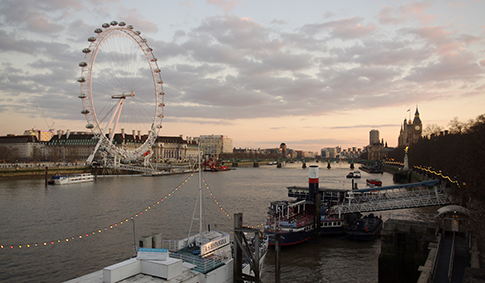
Thames River, London. Photo by Matt Buck.
In a letter to the editor of The Economist (third one from the top), Councillor Harry Phibbs of London’s Hammersmith and Fulham Borough responds to their September article “London’s Sewers, Smelling Sweet” about the Thames Tideway Tunnel. He makes a point about using green, natural stormwater infrastructure solutions by referencing Philadelphia’s “better, cheaper alternative of green infrastructure that soaks up the rainwater in various ways to stop it causing sewage overflows in the first place.” Of course he’s referring to Green City, Clean Waters. (We guess this glowing praise means they’ve gotten over the role
Philadelphia played in that whole revolution thing.)
Here at PWD, we think any investment in infrastructure is worthy and applaud
London’s commitment to reduce sewage overflow into the Thames. In fact, we’re making similar investments in “hard infrastructure” with projects like the recently completed stormwater storage basin unit at Venice Island while also continuing our commitment to green infrastructure. It doesn’t necessarily have to be an “either or” choice. We can (and should) make investments in new pipes as well as new green stormwater infrastructure like tree trenches and rain gardens.
With that said, we are proud of the triple bottom line approach of Green City, Clean Waters. Investment in green infrastructure provides benefits that go beyond simply reducing combined sewer overflows–it also creates social benefits and is good for the economy. For every dollar we spend, we want to provide the biggest return and benefit to the public as well as the environment. Our hope is that green infrastructure, unlike “hard” or “gray” infrastructure, creates a system that will last as long as nature itself. Thanks to Councillor Phibbs for recognizing us for it!